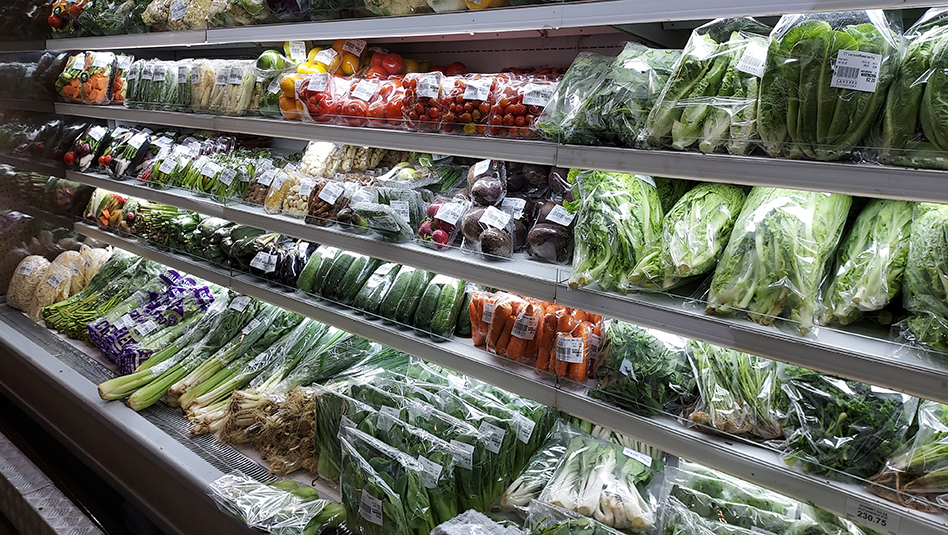Credit Rating: -/BBB/-
Read this content. Log in or sign up.
If you are an investor with us, log in first to your Metrobank Wealth Manager account.
If you are not yet a client, we can help you by clicking the SIGN UP button.

Fundamental View
AS OF 23 May 2024State Bank of India (SBI) is the largest state-owned bank in India and is in some respects the country’s flagship bank. Given the bank’s ~57% government ownership and systemic importance, government support for SBI is very strong.
It is rated Baa3(sta)/BBB-(sta)/BBB-(sta), the same as India’s sovereign ratings. Fitch revised its outlook to stable from negative while affirming its BBB- rating in June 2022. A sovereign downgrade to HY would be the greatest credit risk, but we assess that risk as low.
The bank’s capital buffers are relatively low, but we take comfort in the strong government support.
Business Description
AS OF 23 May 2024- State Bank of India is the largest commercial bank in India. Its predecessor banks date back to the 19th century. In the early 20th century, they merged to form the Imperial Bank of India, which became the State Bank of India after India gained independence in 1947.
- The Government of India remains the largest shareholder with a 56.92% stake. Per the SBI Act, the government's shareholding cannot fall below 55%.
- SBI's merged with its 5 associate banks and Bharatiya Mahila Bank in 2018. The merger catapulted SBI into one of the world's 50 largest banks.
- The bank has 85% of its loans in the domestic market, and has steadily increased its international business too over the past few years with offices across all international business centres. The domestic book is split 42% retail, 35% corporates, 13% SMEs and 10% to the agri segment.
- It has diversified its operations with well regarded subsidiaries in the areas of fund management, credit cards, insurance, and capital markets.
Risk & Catalysts
AS OF 23 May 2024SBI does not have a strong buffer vs. the regulatory minimum of 8%, but its size, systemic importance and majority government shareholding confer particularly strong government support. But consequentially, any deterioration in the sovereign ratings will also affect the bank’s credit.
Increasing consolidation in the country’s financial space may narrow the gap between SBI’s market leading position vs its peers, particularly HDFC Bank.
Asset quality is trending well but net slippages should normalize. Similar to the other PSBs, SBI has a large SME and mid-corporate book which could be impacted disproportionately by higher rates. However, SBI’s asset quality is better than the other PSBs and it is also better run due to the high caliber of its management team.
Deposit competition on the back of tight system liquidity has led to some pressure on margins and loan growth of the Indian banks, but SBI’s less tight liquidity position than its private sector peers has allowed it to guide for steady loan growth of 13-15% YoY in FY25 along with a stable NIM.
Key Metrics
AS OF 23 May 2024| INR mn | FY20 | FY21 | FY22 | FY23 | FY24 |
|---|---|---|---|---|---|
| NIM | 2.97% | 3.04% | 3.12% | 3.37% | 3.28% |
| ROAA | 0.38% | 0.48% | 0.67% | 0.96% | 1.04% |
| ROAE | 6.4% | 8.4% | 11.9% | 16.5% | 17.3% |
| Equity to Assets | 5.9% | 5.6% | 5.6% | 5.9% | 6.1% |
| CET1 Ratio | 10.1% | 10.3% | 10.3% | 10.6% | 10.6% |
| Gross NPA Ratio | 6.15% | 4.98% | 3.97% | 2.78% | 2.24% |
| Provisions/Loans | 1.83% | 1.77% | 0.91% | 0.54% | 0.14% |
| PPP ROA | 1.79% | 1.65% | 1.58% | 1.59% | 1.60% |
CreditSights View
AS OF 10 May 2024SBI is India’s largest bank and a well-run franchise. Government support underpins SBI’s relative positioning, while fundamentally, it has the lowest net NPA, a good CASA ratio, a sufficient (though could be higher) CET1 ratio, good operating metrics and business plans, and the best management among the public sector banks. We like the SBI name for what it offers. Operating performance continued to perform well in FY24 on robust loan growth and benign asset quality. SBI’s less tight liquidity position than its private sector peers has allowed it to guide for steady loan growth of 13-15% YoY in FY25 along with a stable NIM despite deposit competition from tight system liquidity, while India’s continued macro resiliency support a low level of credit costs. We affirm our M/P recommendation.
Recommendation Reviewed: May 10, 2024
Recommendation Changed: December 07, 2020
Who We Recommend


How may we help you?
Search topics about wealth insights and investments.Read this content. Log in or sign up.
If you are an investor with us, log in first to your Metrobank Wealth Manager account.
If you are not yet a client, we can help you by clicking the SIGN UP button.

Fundamental View
AS OF 15 Nov 2023Hyundai continued to post strong results in 3Q23 and reaffirmed FY23 guidance for double-digit consolidated operating profit growth. We expect the company to finish FY23 with strong 4Q23 results, we believe the profit growth in FY24 will be more challenging, owing to increased availability of light vehicles and rising incentive costs. However, we expect Hyundai to benefit from a broad array of affordable vehicle offerings that are more affordable than vehicles offered by most of its OEM competitors, along with a healthy supply of EV offerings. While both GM and Ford have recently announced a slowing trajectory of its EV transition plans, Hyundai plans to begin EV production at their U.S. plant in 2H24 to help take advantage of IRA tax credits that should help with customer affordability.
Business Description
AS OF 15 Nov 2023- Hyundai Motor Co., Ltd. engages in the manufacture and distribution of motor vehicles and parts. It operates through the following business areas: Vehicle, Financial and Others. The Vehicle division offers motor vehicles. The Financial division provides financing, leasing and credit cards. The Other division includes manufacture of railways. The company was founded on December 29, 1967, and is headquartered in Seoul, South Korea.
- Hyundai Capital America benefits from a support agreement with Hyundai Motor (HMC). HCA investor relations confirmed its support (keepwell) agreement contains a fixed charge coverage provision that it views as particularly strong compared to other peers. HCA’s support agreement stipulates that HMC will make cash contributions to HCA if the fixed charge coverage is below 1.1x, allowing the company to mitigate the impact on capital from losses. Key provisions of the support agreement listed in the business update include (1) HMC agrees it, its controlled subsidiaries, and entities subject to joint control, will own 100% of HCA, (2) HMC will cause HCA and its subsidiaries to maintain positive consolidated tangible net worth, (3) HMC will take all necessary actions to ensure HCA maintains a minimum Fixed Charge Coverage of 1.1x, and (4) Third-party enforceability rights.
Risk & Catalysts
AS OF 15 Nov 2023Hyundai management indicated it expects to achieve annual results near the upper end of its FY23 guidance for revenue and operating profit, both of which it previously raised with its 2Q23 earnings release. It expects consolidated revenue growth of 14% -15% and consolidated operating margin of 8% – 9%, which would represent margin expansion of 210 – 310 bp compared to FY22. Management expects its 4Q23 operating results to be driven by continued growth in key markets and product mix improvement, partially offset by modestly higher incentive spending.
Key Metrics
AS OF 15 Nov 2023| KRW bn | FY19 | FY20 | FY21 | FY22 | LTM 3Q23 |
|---|---|---|---|---|---|
| Revenue | 82,487 | 80,577 | 94,143 | 113,718 | 128,310 |
| EBIT | 3,161 | 890 | 5,459 | 8,950 | 15,190 |
| EBIT Margin | 3.8% | 1.1% | 5.8% | 7.9% | 11.8% |
| EBITDA | 6,993 | 5,076 | 10,015 | 13,998 | 20,339 |
| EBITDA Margin | 8.5% | 6.3% | 10.6% | 12.3% | 15.7% |
| Total Liquidity | 15,975 | 17,082 | 19,745 | 26,639 | 26,407 |
| Net Debt | (6,749) | (4,453) | (5,202) | (11,035) | (15,082) |
| Total Debt | 7,628 | 10,920 | 12,569 | 12,940 | 8,685 |
| Gross Leverage | 1.1x | 2.2x | 1.3x | 0.9x | 0.4x |
| Net Leverage | -1.0x | -0.9x | -0.5x | -0.8x | -0.7x |
CreditSights View
AS OF 18 Jun 2024We maintain an Outperform recommendations on notes of Hyundai Capital America (HYNMTR), Hyundai Capital Services, and Kia Corporation based on relative value, expectations of growing market share in developed markets, sustained strong automotive profitability, its innovative hybrid vehicle and EV product offerings that we believe should fuel further share gains, solid free cash flow generation, resilient automotive profit margins, and positive rating momentum.
Recommendation Reviewed: June 18, 2024
Recommendation Changed: December 20, 2023
Who We Recommend









 DOWNLOAD
DOWNLOAD




